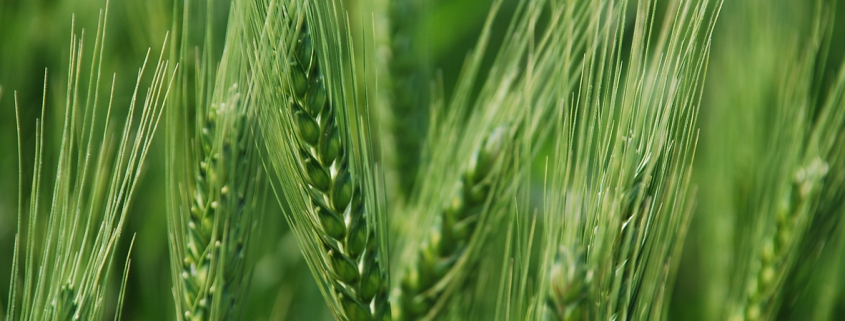Foliar Nutrients for Broadacre Crops
Foliar nutrient sprays are a very effective tool that broadacre farmers can utilize to enhance grain yield and quality. Trace elements such as zinc, manganese and copper are deficient in many cropping regions, but can be easily and cost effectively corrected using foliar sprays. Numerous independent scientific trials with SJB zinc & manganese chelates have shown 10-40% increases in grain yield on deficient soils & 5-10% increases on soils with adequate trace element levels where crops are showing no visual signs of deficiency. At a cost as little as $4/ha for a zinc spray, even a 1% increase in yield would return a profit to the grower on his investment.
In cereal & legume crops, zinc, copper & manganese (see LIG-MALLEE, LIG-PENINSULA) are common issues, particularly in the high pH & calcareous soil types found in South Australia and the Victorian Mallee. The simple reason for this is that in alkaline soil conditions these trace elements are precipitated (chemically bound) so their solubility and availability to the crop are significantly reduced. All these micro-nutrients play important roles in hormone and sugar production which has a significant impact on reproduction (seed set) while copper deficiency can also lead to lodging and subsequent yield loss.
Another benefit of these nutrients is they promote anti-oxidant production that increases the crop’s natural protection against disease and pest attack. In many cases this can reduce or even eliminate the need for in-crop fungicide & insecticide sprays. Early timing of these nutrients is critical for optimum crop response, so they need to be applied well before anthesis/flowering usually at the 4-6 leaf stage. Later applications of copper & magnesium at booting/flag leaf stage can also be beneficial on deficient soils and should be easily identified with tissue analysis.
For canola & legume crops, boron is a particularly important nutrient for flowering & seed yield. Boron is required for pollen tube development and low boron levels inhibit pollen tube growth thus significantly reducing the likelihood of successful fertilization. Again boron needs to be applied early prior to flowering, however for canola, good results have also been achieved with foliar sprays during the bolting-early flowering period. Foliar boron is a very safe option as there is little chance of inducing toxicity that can be an issue with soil application. Legume crops also respond very well to zinc and manganese sprays, prior to, as well as post-flowering.
Another nutrient that can have a significant impact on yield is magnesium. Deficiencies are usually seen on sandy acid soils but can also be induced by high soil potassium levels or application of ammonium fertilizers. Like zinc/copper/manganese, magnesium also drives sugar/starch production critical for optimum seed set so early application is important, however crops also respond well to foliar magnesium sprays later in the season.
Molybdenum is an important trace element for broadacre production. Moly is essential for germination, anthesis in maize crops, nitrogen fixation in legumes & the conversion of soluble nitrates to amino acids. Cereals with molybdenum deficiency can be significantly stunted and yields reduced by up to 30%. Molybdenum deficiency is common on acid soils & often application of lime can correct the issue. Application of sulphates (eg. gypsum) can also reduce uptake of the molybdate anion due to competition in the root zone. Copper & molybdenum have an antagonistic relationship in the soil (high copper will reduce moly uptake & vice versa). Soil application at seeding is a common practice, however if soil pH is not corrected, availability will be limited. Mo is plant (phloem) mobile so foliar sprays are highly effective with only low rates required to correct a deficiency.
A lesser utilized foliar nutrient is phosphorous. Obviously being a major nutrient it is critical for crop production in both the early and later stages of development. On most soil types phosphorous has low availability (<15%) and therefore growers have traditionally over-applied P fertilizers to compensate for this low efficiency. However we have found that even on soils with good Colwell P levels (eg. >60 ppm), crops will still respond to foliar P sprays even though tissue analysis is indicating “Adequate” P status. Another benefit we have observed is that foliar P sprays encourage root uptake of trace elements which can be clearly seen in tissue analysis following application. In the field we have also noted that this can enhance drought tolerance and increase wheat protein levels.
For stressed crops, complete nutrient options such as VLP & GREENA can aid recovery by supplying essential available nutrients at a time when soil availability & root uptake is restricted.
Also check out this Tech Sheet that discusses the different forms of foliar nutrients available to growers and the advantages of SJB Chelates.



Leave a Reply
Want to join the discussion?Feel free to contribute!